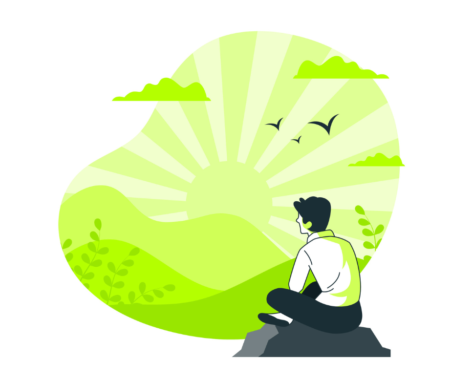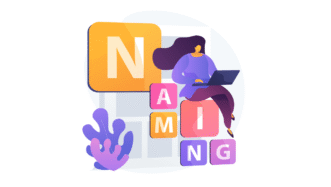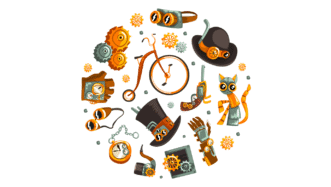LESSON OVERVIEW
The main objectives of this lesson are to:
- discuss cultural philosophies;
- watch a video about Kintsugi;
- practise advanced vocabulary for discussing philosophy.
With this lesson, students discuss art, the idea of imperfection and philosophy. They watch and talk about a video on Kintsugi, a Japanese art that repairs pottery with gold, highlighting its beauty and history. Students explore advanced vocabulary for discussing philosophy (e.g. non-attachment, encapsulate, transience, etc.) and synonyms. They also discuss other Japanese philosophies and life challenges, philosophies from around the world and their cultural values, as well as students’ personal experiences.
VIDEO AND VOCABULARY
This class starts with a warm-up where students look at the lesson title and name things they expect to talk about. After that, they discuss questions about repairing vs. replacing broken items. Then, students watch a video about Kintsugi and summarize its main ideas. Next, they read ideas mentioned in the video (e.g. Kintsugi encompasses two Japanese philosophies.) and think of synonyms for words in bold (e.g. encompasses). Afterwards, they watch the video again and compare their answers to the synonyms used in the video. Following that, students complete gaps in statements about perspectives on beauty, art, and philosophies of imperfection. They practise advanced vocabulary for discussing philosophy and use the correct form of the words (e.g. weathered, encapsulate, fortitude, etc.). Then, students discuss the statements, say how much each idea resonates with them and explain their perspective.
DISCUSSION
At this point in the lesson, students look at life challenges (e.g. facing career or financial uncertainties, dealing with failure or rejection, etc.) and think about which Japanese philosophies connected to Kintsugi (e.g. Yuimaru: care for your inner circle, Gaman: live with resilience, etc.) could help people navigate them. They also explain their ideas. Then, students read descriptions of more philosophies from around the world (e.g. Pura Vida, Selbständigkeit, Lagom) and discuss questions about which country each philosophy originates from, their understanding and application. They also talk about philosophies from their culture and how they shape people’s behaviours and attitudes.
HOMEWORK/REVISION
This lesson plan also includes an additional task that you can use as homework or revision. In the task, students think of beginnings to complete sentences. They use the target vocabulary from the lesson. The task is available in the teacher’s version of the worksheet. You can print it and hand it out to your students. It’s also included in the e-lesson plan.
Subscribe to unlock these and many other Standalone lesson lesson plans with the Unlimited planWORKSHEETS














Such an incredible lesson plan and topic! Thank you!
I’m glad you liked it 🤗
this lesson topic is lovely
loved it for my more developed students
Thank you! I’m glad your advanced students enjoyed the lesson 🙂
Great lesson
fantastic lesson
Thanks 🤗
LOVE this lesson! Thank you so much. All my students are loving it. Great vocabulary and beautiful topic, it’s making our days discussing these topics together in class 🙂 My only thought which I have been pointing out to my students is that I don’t think non-attachment and disengagement are great synonyms, particularly as non-attachment is more of a philosophy. Thanks again <3
Thank you for sharing your thoughts and enthusiasm! ❤️
great lesson 🙂
Thank you! 😊 Glad you enjoyed it!
thanks for the input, unfortunately doing this with German students makes it clear that Selbstständigkeit is not a philosophy, but generally just means “Self-employment” or “independence”
Thanks for your input! We really appreciate it, and that’s why we’ve updated the description a bit to call it a ‘concept’ as it’s often referred to in philosophical studies.
Hi, OK but TBH in German it sounds a bit ridiculous to say that “self employment” is a concept … I’d also check the Spanish ones as well, because “pura vida” is very regional and “mañana” (which means both tomorrow and morning) could be seen as being rather stereotypical and might not be appreciated by Spanish students (just worth checking)
Thanks for your comment! We believe that even terms which have a direct, literal meaning can still function as concepts describing life philosophies or cultural attitudes. For instance, the term Selbständigkeit has a history in German philosophy, including in works interpreting Immanuel Kant.
Regarding ‘mañana’, so far we haven’t received any complaints, even though we have many teachers from Spain. But we respect your concern – if someone considers the use of ‘mañana‑culture’ insulting or stereotypical, we will of course take that seriously and review.